- Home
- Latest poker news
- How to Play Preflop From the Cutoff (CO): Analysis and Tactics
How to Play Preflop From the Cutoff (CO): Analysis and Tactics
Let's analyse the poker hands preflop from the cutoff (CO) position. We take a real player's hand database and look at how he plays from late positions, why he makes certain decisions, and what should be changed to improve effectiveness from this position.
So, based on statistics, this player has a 24% VPIP and a 19% PFR. These stats indicate a tight-aggressive style, which is typical for winning regulars of 6-max ring tables. This style of play allows the player to build a strong image at the table and helps avoid difficult decisions on postflop.
Playing suited aces via cold calls and 3-bets
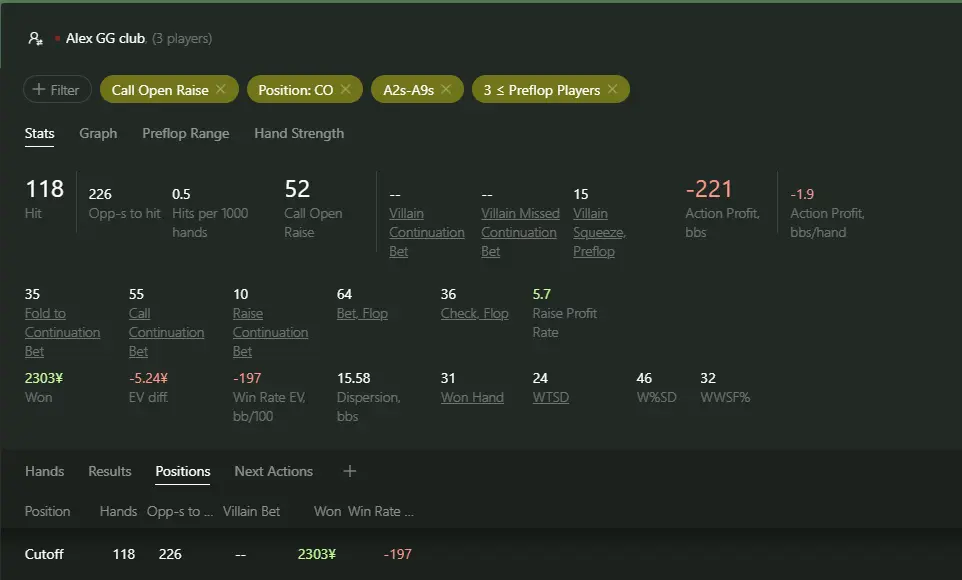
Let's start the analysis with the suited Ax (Ace with one card of the same suit) hands when calling preflop. According to the statistics in the screenshot above, these hands show significant losses when cold-calling — around 197 bb/100.
This means that a passive flat-call strategy with suited Ax is highly ineffective over the long term. Numbers show that the expected value (EV) of calling preflop is negative, despite the potential to make nut flush draws, top pairs with strong kickers, and the ability to realize equity postflop in position.
If you want to maximize your EV, it's important to avoid such calls and focus on a more aggressive preflop strategy. In most cases, it's more profitable to 3-bet (re-raise) with these hands or fold them entirely, especially out of position. This way, you reduce variance, control the pot size, and maintain the initiative — all key elements of successful preflop play from late positions like the cutoff or button.
Let's look at an example of a play from the suited Ax category:
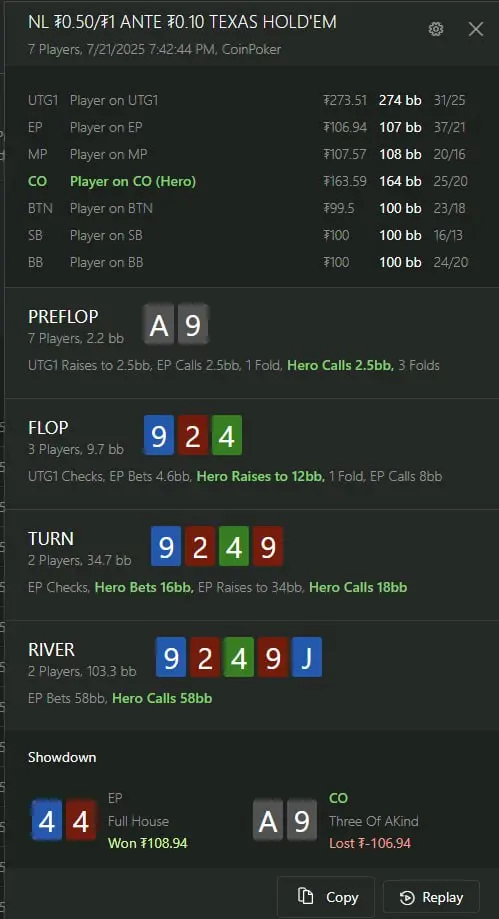
The situation changes if instead of calling you take a more aggressive line — 3-betting preflop. According to the data, suited Ax hands show a solid win rate of around +626 bb/100 when used as 3-bet hands. This massive difference in EV between passive flat-calling and aggressive 3-betting makes the optimal choice quite clear.
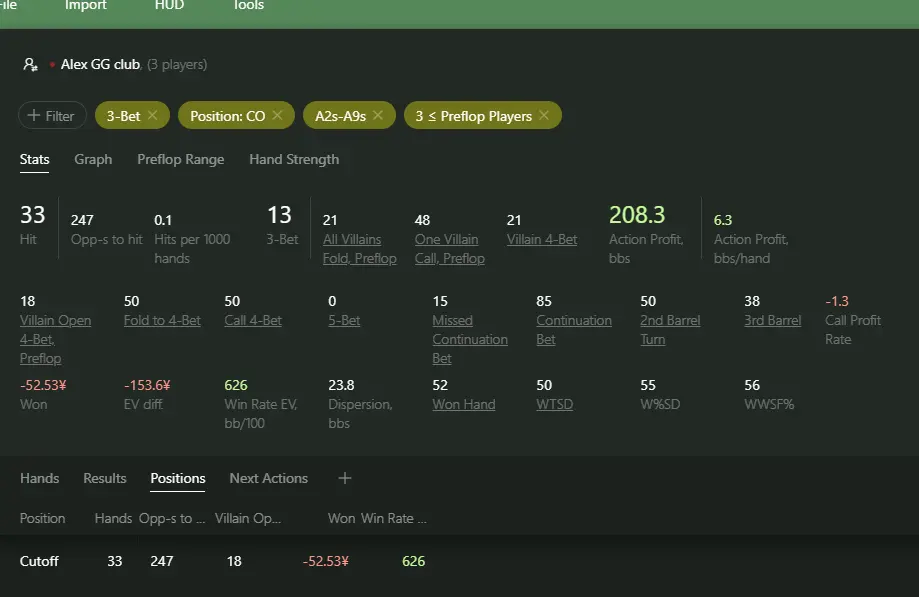
The key advantages of 3-betting with suited Ax:
- Generating fold equity against weaker and capped ranges.
- Playing in position with the initiative.
- Good postflop playability due to nut flush potential and Ace blockers that reduce the chance of opponents holding strong Ax hands.
Therefore, instead of simply cold-calling raises with suited Ax and finding yourself in tough spots without the initiative, it’s far more profitable to apply pressure with a 3-bet or fold. This strategic adjustment helps minimize losses, exploit weaker opponents, and significantly boost EV.
Pocket pairs (22–44)
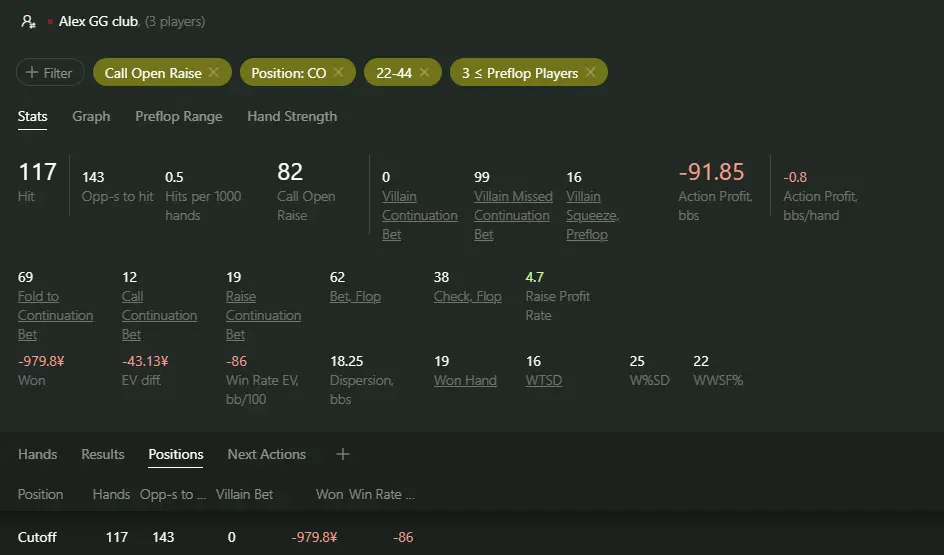
The next category of hands worth considering is pocket pairs. At first glance, small pairs — such as 22, 33, and 44 — may seem promising because of their set-mining potential. However, the statistics show a different picture.
In the analyzed sample, small pocket pairs (22–44) show a loose rate of –86 bb/100. In reality these hands rarely realize their equity unless they flop a set, and often end up in difficult postflop spots where they have to fold. Even when they do hit a set, they can occasionally be dominated by higher pocket pairs, leading to reverse implied odds.
As with suited Ax, passively playing small pairs without a plan is generally a losing approach. Instead, players should be more selective and using these hands only in specific scenarios, such as set-mining with deep stacks or against weak opponents with high fold-to-flop tendencies. In other cases, it’s often best to fold small pairs from your preflop range.
Let’s now look at an example of how to play pocket pairs in practice.
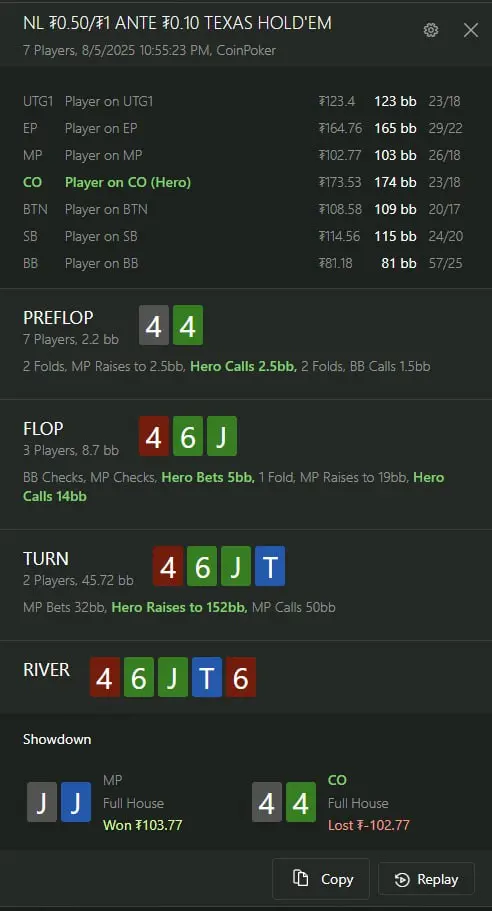
Straight-potential hands, marginal hands, and trash
The next category to analyze includes suited and offsuit connectors, along with other speculative or marginal holdings that often end up in a cold-calling range. In theory, these hands might look playable, especially in position: connect with the board, make straights or flushes and so on. However, statistics show the opposite.
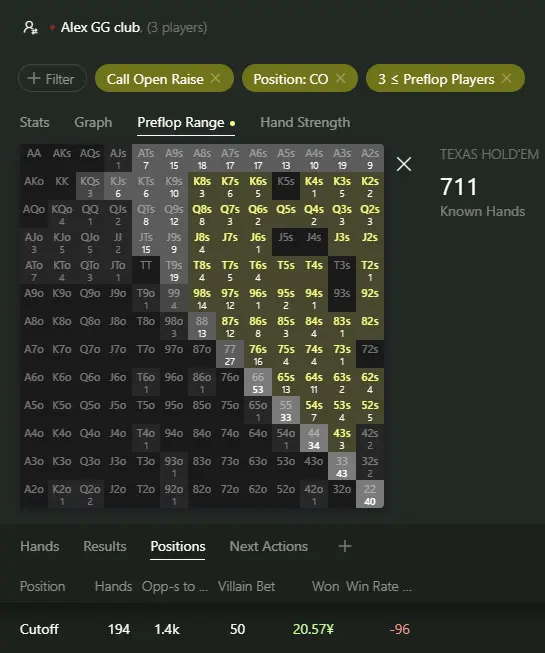
According to the data, these hands show a negative result of approximately –96 bb/100, making them clearly unprofitable even with seemingly solid postflop play.
Therefore, including weak connectors in your cold-call range is unjustified and leads to consistent losses. The optimal adjustment is to remove low-value speculative hands and outright trash from your preflop calling range. Doing so will tighten your strategy, avoid -EV spots, and increase your overall profit.
Summer up
A review of the hand categories commonly used for cold calling reveals a clear trend: the overall strategy is unprofitable. The biggest red-line losses are concentrated in the following groups:
- Connectors are the most unprofitable category, performing deep in the red.
- Suited Ax hands and suited gappers are also showing loose rates despite their perceived playability.
- Offsuit Broadways — particularly AJ and KQ, which are always overvalued and overplayed.
The conclusion is obvious: folding is usually more profitable than cold calling, especially from the cutoff (CO), where there’s a high chance of being out of position postflop.
Hands like AJo and KQo should be shifted into a 3-bet-or-fold strategy, depending on the opponent. All other offsuit Broadway hands that aren’t part of your 3-bet range should be folded.
The aggregate result of –28 bb/100 further confirms that the passive cold-calling is a long-term EV leak. To improve performance, players must either adopt a more aggressive preflop strategy or discipline themselves to fold marginal combinations.
What to do next
What if you applied the same level of detailed analysis to every position at the table? The result would be eye-opening — you’d likely rebuild your strategy from the ground up. Your game would become more precise, more profitable, and far less prone to costly mistakes.
BaseAnalise.com offers exactly this approach. Their platform provides accurate, easy-to-understand, and actionable insights based on hand history database. This is especially useful for those who want to find a poker coach or improve the game on their own, turning raw statistics into real, measurable profit.
The United Kingdom is one of the countries with the most gambling tradition in the world; it is e...
Live in the Hustler Casino Live studio, American Nikil "Nik Airball" Arcot announced his partners...
Spins were introduced at ACR Poker back in 2015. The format is now called Spinz and is available ...
Canada is one of the largest and most developed countries in the world, although its population b...

